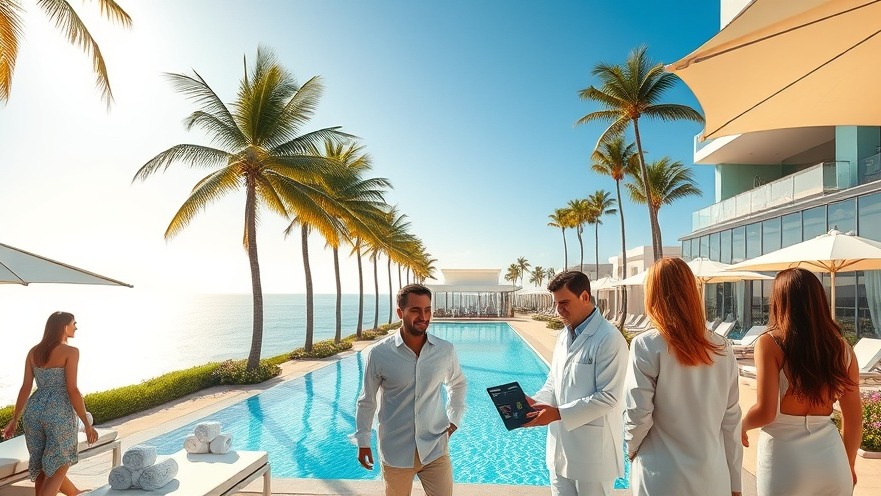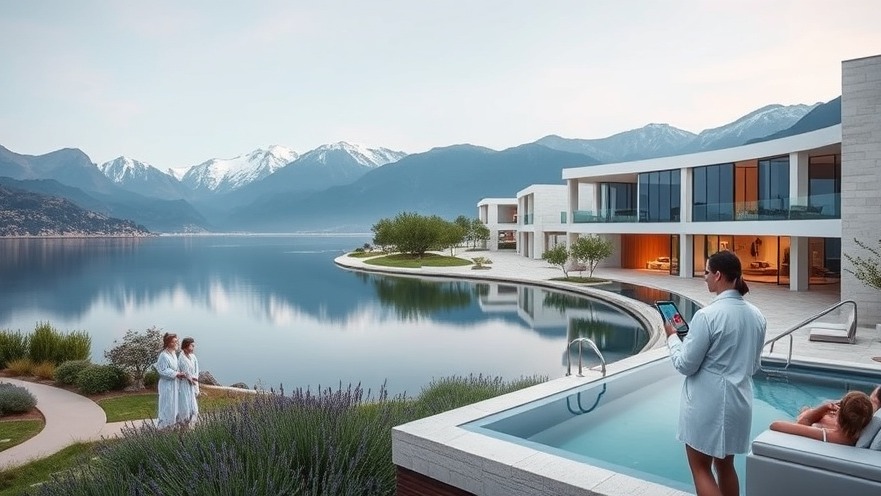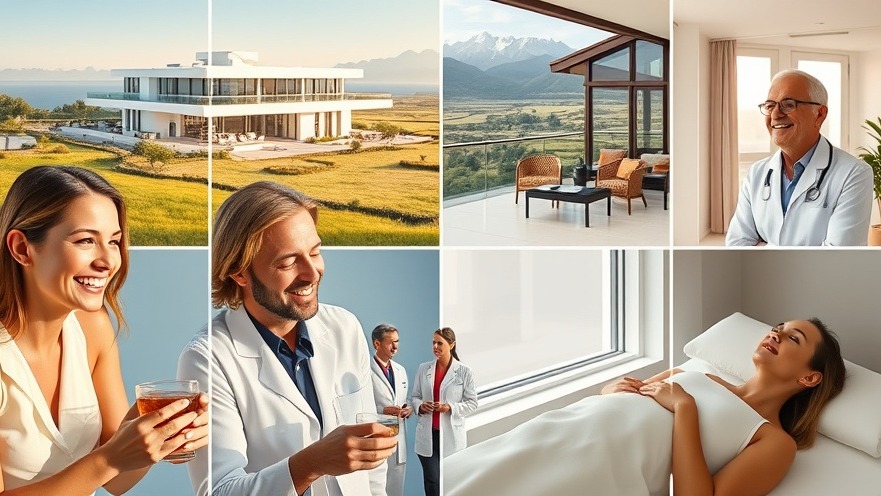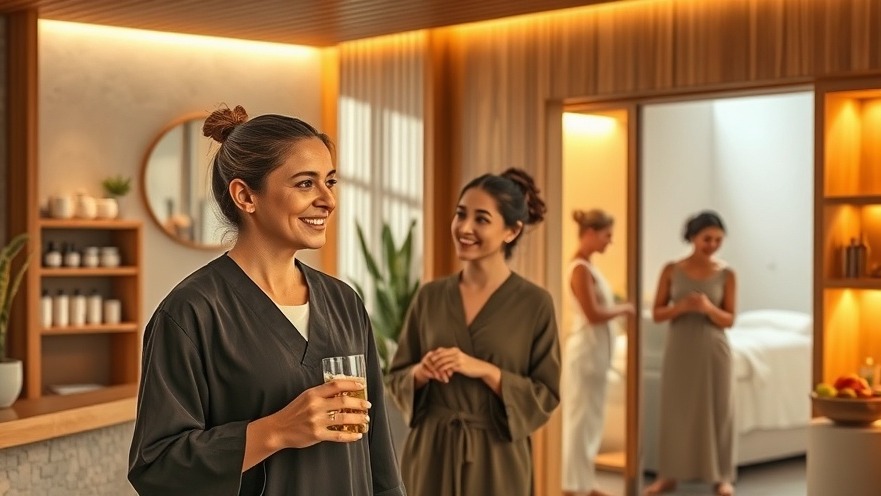
A New Kind of Getaway
At first glance, it looks like a resort. Palm trees, infinity pools, plush suites. But instead of being welcomed with a glass of champagne, guests are guided to a lab for a full-body MRI. A nutritionist tweaks their diet with real-time glucose data. Doctors walk them through longevity blood panels.
This is the world of Med-cations — high-end retreats that mix medicine, biohacking, and luxury hospitality.
For spa professionals, these retreats aren’t just curiosities for the ultra-wealthy. They’re trendsetters, shaping what clients will soon expect from wellness everywhere. As one industry leader put it:
“We want to breathe new vitality into you.” — Dr. George Gaitanos, Chenot Group
That simple phrase says a lot. Today’s guests want more than a pampering massage or a weekend detox. They’re looking for vitality.
And the spas that figure out how to deliver even a slice of that experience — whether through design, service, or new offerings — will be the ones that stand out.
From Spas to Longevity Resorts
Not long ago, “wellness tourism” meant yoga retreats or spa weekends. But over the past 15 years, something new has emerged: longevity resorts.
SHA Wellness Clinic in Spain set the pace, combining Eastern therapies with Western diagnostics. They’ve since expanded to Mexico and announced an entire “healthy living island” in the UAE.
Clinique La Prairie in Switzerland built its reputation on scientific credibility, with more than 50 doctors on staff. Its Longevity Hubs now stretch from Madrid to Bangkok.
Lanserhof in Austria and Germany turned traditional fasting cures into sleek, medically supervised detox programs.
Chenot refined the idea of “detox” into something structured and physiological.
Each of these pioneers positioned wellness not just as relaxation, but as measurable transformation.
And that positioning is rewriting what guests expect from the spa experience — even those who will never step foot in Montreux or Marbella.

Why Now?
The timing isn’t accidental. The pandemic shifted wellness from a “nice to have” into a priority. People started asking different questions: How do I stay healthy longer? How do I prevent disease, not just recover from it?
Technology also caught up. Full-body MRI scans, once reserved for hospitals, are now marketed directly to consumers.
Epigenetic clocks, continuous glucose monitors, and sleep-tracking wearables have gone mainstream. When guests hear about these tools in the news, they start expecting more from their wellness providers back home.
And then there’s the star power. Tony Robbins and Peter Diamandis co-founded Fountain Life, blending advanced diagnostics with concierge medicine.
Hospitality veteran Sam Nazarian launched The Estate, a longevity-focused hotel brand with its first projects set for 2026.
In short: health is becoming the new luxury.
Inside a Med-cation
So what actually happens during one of these programs?
A typical stay might start with hours of testing: whole-body MRI, microbiome analysis, bloodwork for thousands of biomarkers. Guests get epigenetic age results and cognitive performance screenings.
Then comes the lifestyle side: chef-prepared meals tailored to your glucose data, circadian lighting in your suite to optimize sleep, and recovery therapies like cryotherapy, red light, or compression boots.
Finally, there’s continuity. Guests don’t just leave with memories — they leave with dashboards, wearables, and sometimes year-long memberships that keep tracking their progress.
Alejandro Bataller of SHA Wellness explains their philosophy:
“Our vision has always been to merge the wisdom of Eastern traditions with the precision of Western medicine.”
For spa leaders, that blend is the big takeaway. It’s not either/or. The future lies in experiences that are both soulful and scientific.

What Sets Them Apart
Each brand has carved out its own identity:
SHA Wellness: Global expansion and lifestyle design, from clinics to communities.
Lanserhof: Quiet, clinically supervised detox rooted in fasting traditions.
Clinique La Prairie: Swiss precision, a strong medical backbone, and unmatched luxury.
Chenot: A structured method that reframes “detox” as cellular reset.
But together, they share something powerful: the promise of transformation.
That’s also where some of the controversy comes in. Whole-body MRI, while promising, carries risks of false positives and unnecessary stress.
Ozone therapy, a common feature at SHA Mexico, is not FDA-approved in the U.S. and remains debated in the medical community.
These treatments spark headlines, but the lesson for spa professionals isn’t to install an MRI machine. It’s to recognize that clients want credibility, personalization, and clear communication.
Even small wellness businesses can adopt those values.
What Spa Professionals Can Learn
Not every spa will partner with Fountain Life or invest in epigenetic labs. But there are practical lessons to bring home:
Design matters. Sleep-friendly lighting, restorative soundscapes, or even nutritional menus can echo the longevity resort feel without major cost.
Language matters. Talking about “vitality,” “reset,” or “performance” connects with guests in ways “pampering” no longer does.
Continuity matters. Even a follow-up email with at-home tips can create the sense of an ongoing journey.
As Simone Gibertoni of Clinique La Prairie often emphasizes, longevity care isn’t a single appointment — it’s a proactive lifestyle.
His approach shows that spas, too, can think beyond the treatment room and into the guest’s everyday life.

A Peek at the Future
What’s next? Expect more partnerships between hotel brands and longevity clinics. SHA’s UAE island project is the boldest example yet — an entire destination designed around preventive health.
Six Senses recently rolled out a women’s health program that uses biometrics like glucose monitors to personalize care.
Wearables are also moving from novelty to necessity. SHA recently announced a partnership with WHOOP to integrate real-time performance data into guest programs.
Oura, the sleep-tracking ring, just secured a major investment from Dexcom, signaling a push into health monitoring.
As these tools trickle down, guests will arrive at spas with more knowledge — and more expectations.
Conclusion: What It Means for the Spa Industry
The rise of Med-cations isn’t just a luxury travel story. It’s a signal to the spa industry about where wellness is heading.
Guests are hearing about full-body scans, personalized nutrition, and biohacking recovery suites. They may not book a $20,000 week in Switzerland, but they’ll come to their neighborhood spa with those ideas in mind.
For professionals, the message is clear:
Stay curious about what’s happening at the top of the market.
Borrow what fits — whether that’s language, design, or continuity.
Always ground your offerings in credibility and communication.
Because in the end, it’s not about competing with Clinique La Prairie. It’s about understanding the values driving this trend — personalization, transformation, and vitality — and finding ways to make them part of your own guest experience.
As Dr. Gaitanos reminds us, the goal is simple:
“We want to breathe new vitality into you.”
And that, more than any piece of technology or therapy, is a message every spa professional can carry forward.
Explore deeper analysis on spa business trends, treatment evolution, and market shifts in the Industry Trends category, or visit Spa Front News for more industry intelligence and wellness inspiration.
—
Authored by the Spa Front News Editorial Team — a publication of DSA Digital Media, dedicated to elevating the spa industry with expert insights, treatment breakthroughs, and destination features for spa owners, managers, and wellness leaders.
 Add Row
Add Row  Add
Add 




Write A Comment